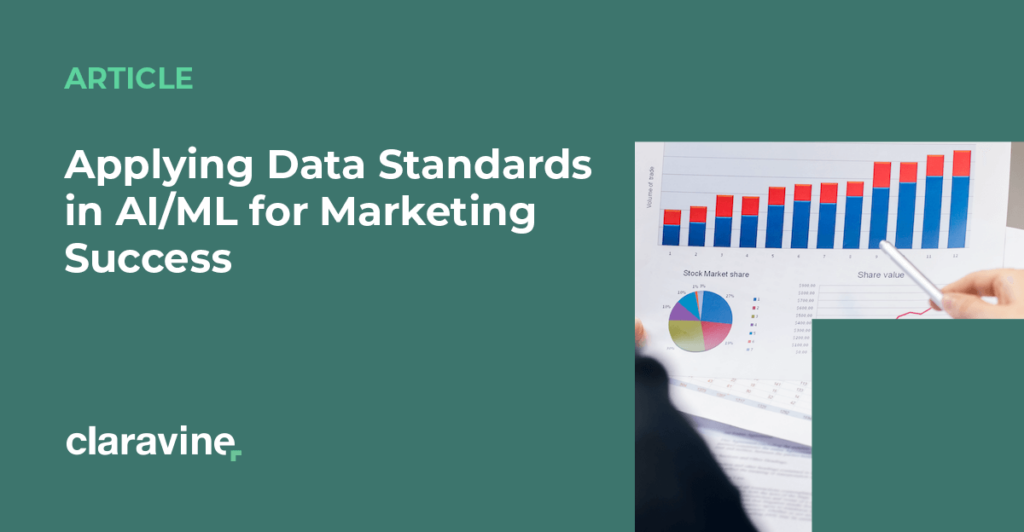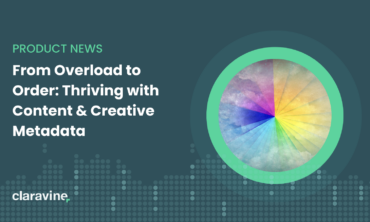Poor Data Standards Are Sabotaging Your Artificial Intelligence and Machine Learning

Marketers have grown accustomed to disruption. In the last five years alone, they’ve faced a host of complex data challenges, new privacy regulations and the looming loss of third-party tracking and the tools associated with it. Leaders have prioritized first-party data collection to make up for the shortfall of direct consumer knowledge. This data goldmine can help companies get closer to customers, improve products and services, steal market share and more.
While some are just getting their first-party data collection efforts off the ground, others are actively exploring artificial intelligence (AI) and machine learning (ML) to make the most of their data resources. AI power users, as McKinsey & Company calls them, are reaping measurable benefits such as increased revenues. The vast majority, however, are discovering their databases and datasets too fragmented to deliver promised results. The heart of the problem lies in the quality of the data input into AI-ML. Marketing datasets and databases are created with different data standards or no data standards at all. Despite the best of intentions, AI-ML investments (and marketers) are being set up to fail. Read on for how data standards can unlock all the rewards of AI-ML.
AI’s Rise to Must-Have Marketer Tool
The global pandemic accelerated digital transformation three to four years, with many changes here to stay. Faced with increased competition, marketers are seeking new strategies and processes to retain existing customers and acquire new ones. Technology is at the forefront, in terms of talent and data management. AI-ML, in particular, has risen in popularity and adoption with pilot programs and proof of concepts (POCs).
Defining AI and ML
Artificial Intelligence: a machine’s ability to simulate intelligent human behavior
Machine Learning: a subset of AI, a computer’s process of automatically improving performance by ingesting new data into a statistical model in order to make predictions or decisions
The amount of data being created is astounding — 1.7 MB of data per person every second. As marketers make greater use of first-party data, they anticipate using 50% more sources than they did two years ago, per Salesforce State of Marketing report 2020. Applying AI-ML to that mountain of data makes strategic sense for many marketers, with machine learning reported to work 100x faster than humans. It’s no surprise then that 84% of marketing leaders say they use AI, a 186% increase over the last three years.
Smarter, Faster, Better Marketing With AI-ML
In addition to speed, AI-ML offers myriad benefits to marketing teams. Balancing engaging ad experiences with consumer privacy concerns proves a complex puzzle for marketers to solve. The risks couldn’t be higher with loss of consumer trust chief among marketer worries.
In the absence of persistent cross-channel identifiers like the third-party cookie, AI offers the ability to use data in new and promising ways. An IBM-commissioned Forrester study revealed four key areas that AI can impact marketing processes and outcomes: creative, measurement, targeting and media. Common use cases include more precise and differentiated segmentation and targeting; smarter recommendation engines; unification of volumes of data for scaled insights and analysis; omnichannel customer attribution and more.
Common Machine Learning Use Cases for Marketers
Source: “Machine Learning for Marketers,” Toward Data Science
AI-ML’s Failure to Launch
With so much to gain, why isn’t AI-ML living up to its potential? In the data rush to POCs and pilots, many marketers encountered a number of unanticipated roadblocks. O’Reilly’s The State of Data Quality in 2020 found that more than 60% of AI-ML projects failed due to siloed and inconsistent data. Disorganized or missing metadata ranked as the second most common problem. A year later, O’Reilly’s 2021 AI Adoption in the Enterprise cited the lack of data science talent as the chief barrier to AI adoption and success. On top of the shortage of talent, bad data is hamstringing teams from doing actual analysis. Jamal Robinson, Amazon Web Services lead of AI/ML Business Development explains that, “data science teams can spend nearly 70% of their time acquiring, loading and transforming the data before the machine learning process starts.”
The common denominator in AI-ML failures starts and ends with data. Marketing departments commonly support 26 or more systems with 18+ taxonomies, each created to support specific campaigns. But blaming data alone is merely a symptom of a larger disease plaguing marketing teams — the lack of data standards. The single greatest factor in improving data quality and data use lies in consistent, repeatable, and sticky data standards. Data standards are the high octane fuel for your AI-ML racecar.
Why Data Standards Matter to AI-ML — and Everything Else in Marketing
Garbage in, garbage out, as the saying goes. The same holds true for data in all its applications and use cases. Without data standards, marketers incur hard costs to their bottom line. Bad data racked up a $12.9 million+ tab each year, per Gartner’s 2020 Magic Quadrant for Data Quality Solutions research. As digitization continues its breakneck pace, losses from poor quality data will only increase.
Marketers are losing precious time and resources to bad data as well. Teams spend a third of their time grappling with data quality challenges. Marketing is also paying a high price in loss of customers. One in five companies couldn’t save a customer due to incomplete or inaccurate data. Now imagine putting that bad data into your expensive AI-ML. Do your teams speak the same data language? If they don’t, data science will need fluency in every language across your organization in order to translate and efficiently use your data. Sound overwhelming? It is.
“Poor data quality is enemy number one to the widespread,
profitable use of machine learning.” — Harvard Business Review
Even the most diligent of data science and marketing teams can’t retroactively clean every error and inconsistency. Nor can your AI-ML systems. It’s anyone’s guess what the true and lasting impact on your predictive modeling will be with poor data quality. But you can bet that inconsistent, incomplete data input will deliver the same in output, no matter the sophistication of your AI-ML. The only way out of this quicksand is to focus on building the strongest foundation for your data, i.e., data standards.
The Data Standards Advantage
Data standards are an agreed-upon collection of naming conventions and values that apply to all your data sources and digital technologies. Applying rigor across your organization to follow and implement these standards results in data integrity, accuracy, and relevance. Data standards become the universal translation layer for any dataset, any data source, any data asset.
Business unit experts define your data standards. They agree on how best to solve business challenges to deliver consistent results and reliable data for retrieval access, and various uses including AI-ML. Data standards require time upfront to develop, but the payoff long term is more economical and effective than a Wild West approach. Most importantly, data standards help create a connected consumer view across your key digital assets, from campaigns to content, product catalogs to coupons, and more.
With standards in place, your marketing and data experts can do what they do best. High-quality data helps drive internal alignment and increases the efficiency and precision of teams and partners, all working from the same data blueprint. Data standards also ensure your AI-ML investments extract the most value for every dollar and hour spent. Instead of holding your technology back, data standards allow it to flex and adapt in real time as more trustworthy, consistent data flows in.
Look Before Your Leap Into AI-ML
Artificial intelligence and machine learning can help grow your business, given the right foresight and preparation. Do your due diligence across your organization to evaluate your data readiness for such a venture. Is your data consistent, reliable, and fresh? Do teams, departments, partners, and regions follow the same standards for bringing data in, validating, verifying and sending data out? Creating a data standards practice can solve the many data challenges marketers face today and build a strong foundation for the next wave of change to come. Take the time upfront to focus on your data integrity. This important prework can raise your AI and ML game and help you realize all the benefits it has to offer.


